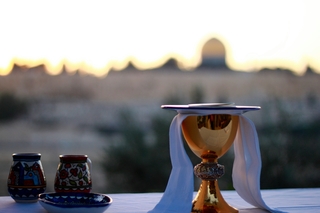Open To: General Public
Admission: Free
Location: ISM Great Hall, 409 Prospect Street, New Haven
Description: Rehabilitating Human Sacrifice in a Christian Context
Part of the 2007-2008 Liturgy Symposium Series
“Unless you eat the flesh of the Son of the Virgin,
and drink His blood, you shall not have life in you.”
—John 6:53 [in the Náhuatl translation, c. 1540]
The passion of Christ has been one of the great themes of world art — the visual, musical, dramatic, and literary arts. It has absorbed the religious imagination of believers and non-believers alike for nearly twenty centuries, and has been an inexhaustible source of piety and inspiration. My focus here is on the role of Christ’s passion in the liturgical imagination at the moment when Christianity first met the peoples of the New World (and vice versa), specifically, the indigenous cultures of central Mexico. The evangelization of the New World coincided with the very years in which Luther, Calvin, and Zwingli were separating themselves from the Roman Church on important issues like the sacrificial aspect of the Mass or the transubstantiation of the communion elements. For the missionary friars, those very doctrines now needed to be instilled and dramatized in the New World among a people quite accustomed to sacred violence and ritual cannibalism. Therefore, among the many tasks confronting the missionaries was the need to re-habilitate the very notion of sacrifice for the presentation of Christ’s redeeming passion and death on Calvary, and his real presence as body and blood in the food of the Eucharist. This they did, with the help of native literati, by re-using the symbols, metaphors, and cosmovision of Aztec civilization. Their accomplishment can contribute to our appreciation of the role of inculturation, and of the ways in which Christ’s sacrifice was enriched by culture-contact.
